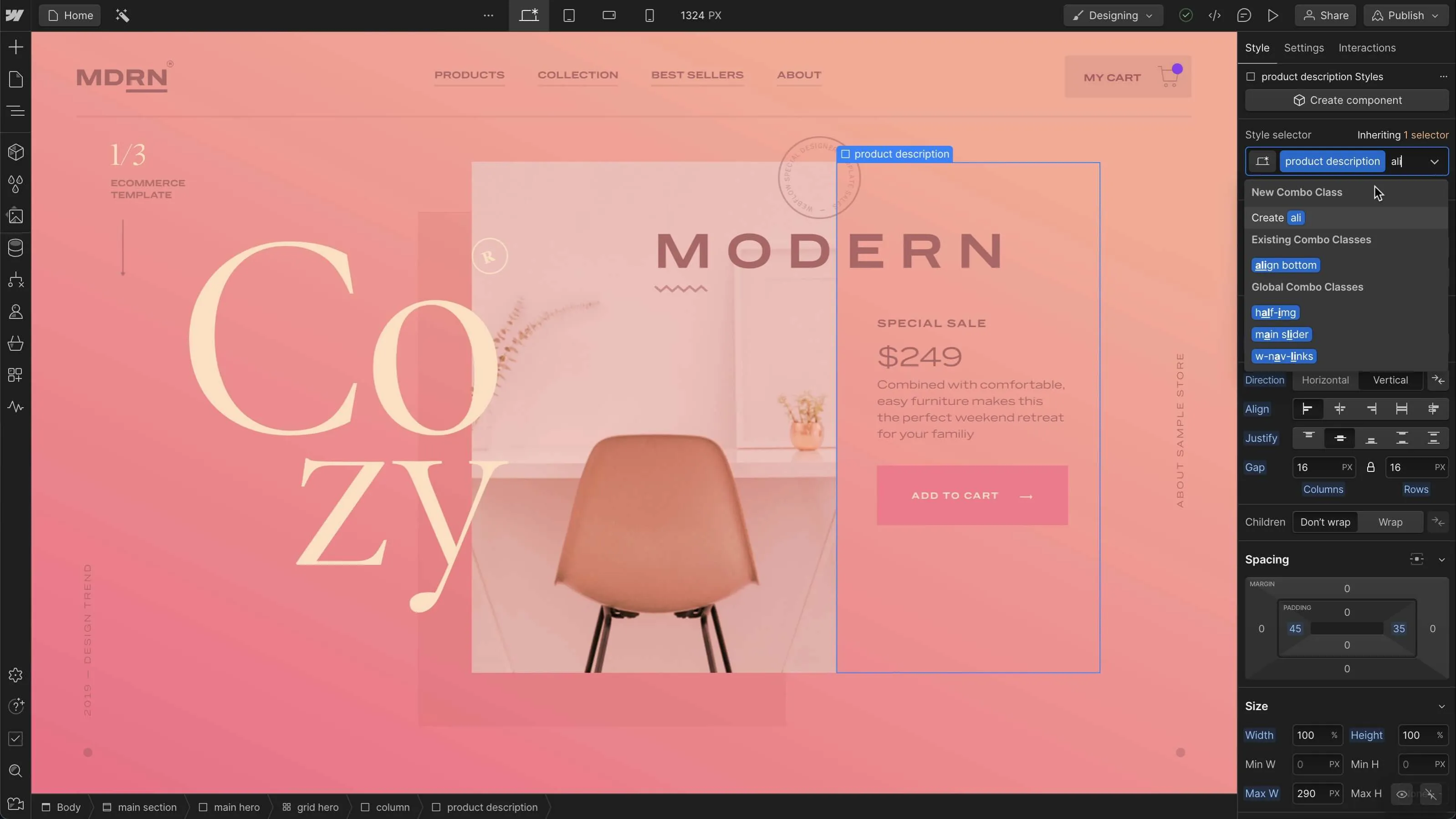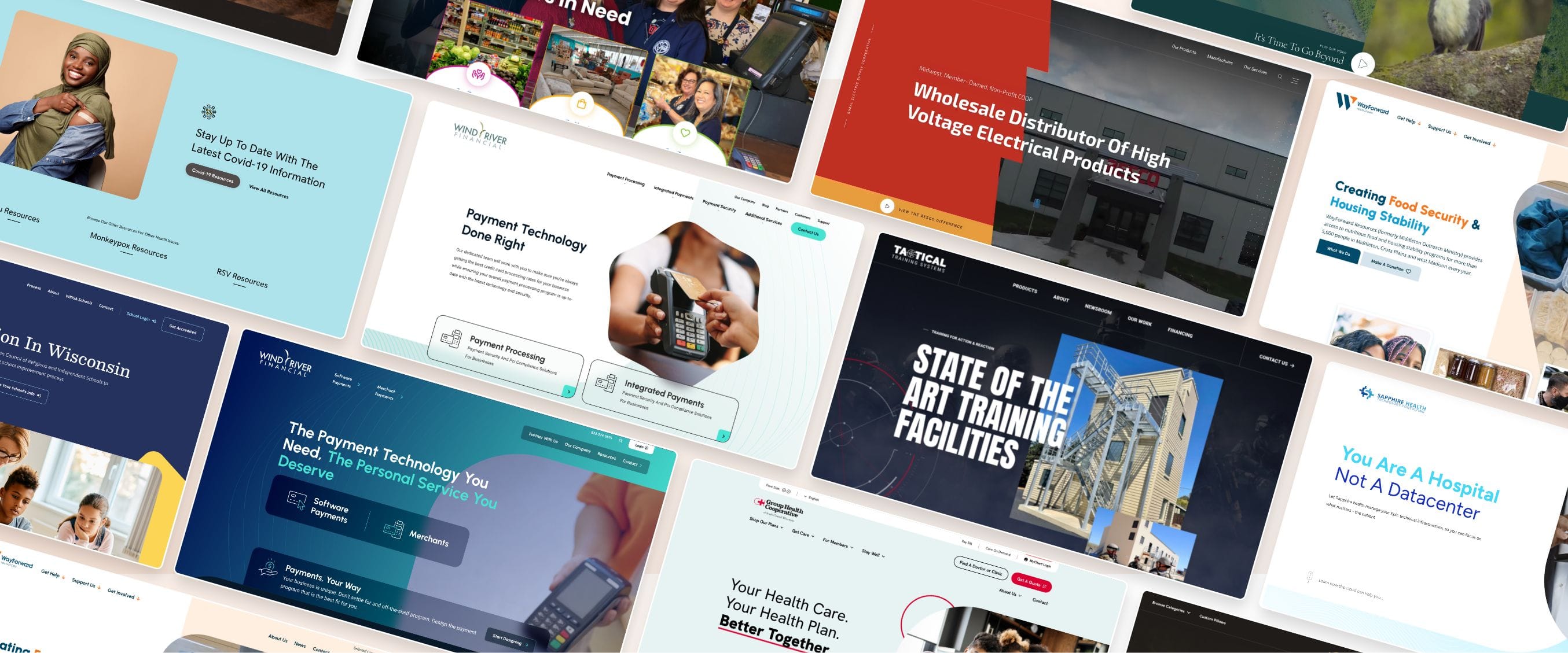Website Design Strategies to Ensure Your Site is Visually Appealing and User-Friendly
Website Design Strategies to Ensure Your Site is Visually Appealing and User-Friendly
Blog Article
Modern Website Design That Catches Focus and Transforms
In a significantly electronic landscape, modern-day site layout has actually emerged as a critical consider catching individual interest and driving conversions. By purposefully utilizing aesthetic hierarchy, receptive designs, and engaging interactive components, developers can create experiences that not only attract site visitors yet likewise help with significant interactions. Efficient call-to-action approaches play a critical duty in leading customers toward preferred end results. As we explore these important elements, it ends up being clear that recognizing their interaction can significantly influence a site's performance and individual complete satisfaction. What are the crucial elements that genuinely make a distinction?
Importance of Visual Pecking Order
Visual hierarchy is an important element in website style, as it overviews users' interest and enhances their general experience. By purposefully organizing web content, designers can direct users to the most vital info first, thus increasing interaction and boosting use.
Incorporating a logical circulation in content arrangement is crucial; for example, putting one of the most vital details at the top of a page promotes instant recognition. Consistent usage of typography, such as differing font dimensions and styles, helps develop a clear content framework. This organization not just aids in navigation yet additionally constructs depend on, as customers really feel much more comfy when they can quickly locate what they are seeking.
Inevitably, a well-executed visual pecking order not only boosts aesthetic charm yet additionally considerably affects individual habits. By focusing on crucial elements and making sure a smooth experience, designers can properly convert visitors into consumers, enhancing the relevance of this foundational layout concept in contemporary web site growth.
Responsive Layout for All Devices
Developing a seamless experience throughout numerous devices is necessary in today's electronic landscape, where users gain access to internet sites from desktop computers, tablet computers, and smart devices alike. Receptive style is a vital strategy that makes sure sites adapt fluidly to different display dimensions, alignments, and resolutions. By utilizing adaptable grids, pictures, and CSS media questions, developers can create layouts that keep aesthetic honesty and capability, despite the tool being utilized.
The value of responsive style expands beyond looks; it directly affects customer engagement and conversion rates. A site that functions well on all tools urges longer sees and minimizes bounce rates, as customers are most likely to connect with material that is very easy to browse. Search engines, specifically Google, focus on mobile-friendly sites in their positions, making responsive design an important component of search engine optimization (SEO)
Integrating receptive layout not only improves individual experience however likewise simplifies the growth process. By creating a single website that works throughout gadgets, organizations can conserve time and resources compared to creating different mobile and desktop versions. Inevitably, responsive layout is an essential approach for modern-day site design, guaranteeing ease of access and complete satisfaction for all individuals, despite their device.
Involving Interactive Elements
While a receptive style prepares for a functional site, including interesting interactive elements is essential for capturing customer attention and fostering much deeper links. Website Design. Interactive elements, such as animations, quizzes, and clickable infographics, produce a more dynamic user experience, encouraging site visitors to spend even more time on the site
Incorporating interactive functions can likewise assist individuals with complicated information, making it less complicated to absorb content. Interactive sliders can highlight item variations, while embedded video clips can provide presentations or endorsements that reverberate more than fixed pictures or message. In addition, gamification methods, like rewards for finishing jobs or engaging with content, can improve customer motivation and retention.
Effective usage of interactive elements not only improves the user look at this website experience yet can likewise lead to higher conversion rates. It is vital to stabilize interactivity with performance; excessively complicated functions may impede website rate, adversely impacting individual satisfaction.
Streamlined Navigation Practices
Reliable navigation is a foundation of any kind of effective web site, as it directly affects individual experience and content availability. Structured navigating techniques guarantee that customers can conveniently situate information, enhancing their interaction with the website. A well-structured navigation menu need to be simple and intuitive, normally featuring a limited variety of key classifications to stay clear of overwhelming visitors.
To attain streamlined navigation, developers should prioritize a hierarchical structure that practically organizes web content. Carrying out breadcrumb routes can offer users with context about their current location within the site, enabling smooth backtracking. Furthermore, utilizing drop-down food selections can efficiently save space while still offering accessibility to subcategories.
Responsive design is crucial, as navigation needs to be functional throughout all tools (Website Design). Mobile customers, in particular, take advantage of touch-friendly menus and retractable areas that maintain use without compromising looks

Efficient Call-to-Action Approaches
A well-crafted call-to-action (CTA) is crucial for guiding customers towards desired outcomes on a web site, as it encourages them to involve with web content or buy. To optimize their performance, CTAs need to be clear, compelling, and tactically put throughout the website.
First, use action-oriented language that connects necessity or worth, such as "Obtain Begun," "Sign up with Currently," or "Insurance claim Your Discount." This language not only motivates customers yet likewise establishes clear assumptions concerning the following actions.
Second, take into consideration style components; CTAs should stand apart aesthetically via contrasting colors, enough whitespace, and noticeable positioning. A switch that is very easy to click this see and click increases the likelihood of user interaction.
Additionally, personalizing CTAs based upon individual habits or demographics can dramatically boost involvement. Customized messages resonate much more with individuals, driving greater conversion rates.

Verdict
In conclusion, modern web site design highlights the integration of visual power structure, responsive formats, involving interactive aspects, streamlined navigation, and reliable call-to-action strategies. These components collectively boost individual experience, making certain that visitors remain involved and motivated to check out content further. By focusing on these style concepts, businesses can dramatically boost individual retention and conversion prices, ultimately resulting in higher success in the digital landscape. The continual evolution of web style emphasizes its important role in reliable online communication and advertising and marketing.
In an increasingly digital landscape, modern website layout has emerged as an essential variable in capturing user focus and driving conversions.Visual power structure is a critical component in internet site style, as it overviews individuals' attention and improves their total experience.The value of receptive layout prolongs past aesthetic appeals; it directly affects customer engagement and conversion rates.Including responsive design not just improves customer experience however likewise simplifies the advancement procedure. Ultimately, receptive style is a basic approach for modern web site style, making sure accessibility and fulfillment for all users, regardless of their gadget.
Report this page